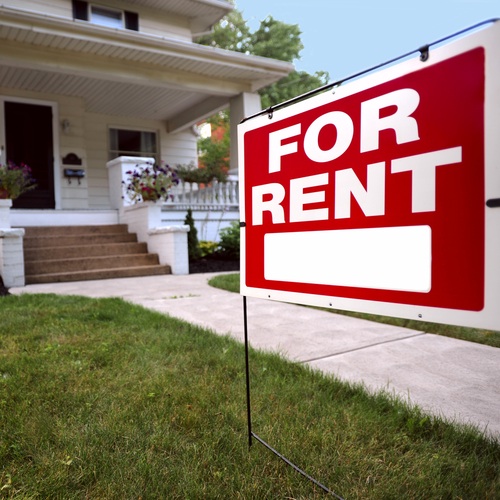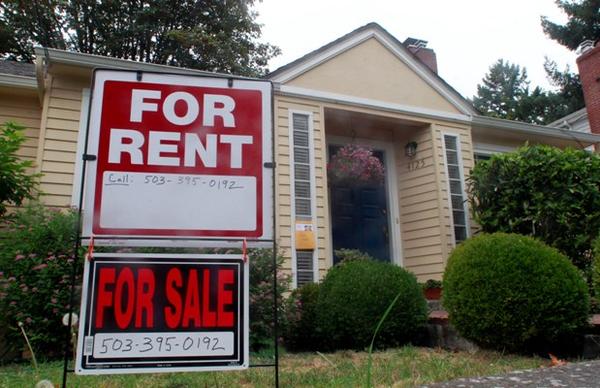Security Deposits are usually equal to one month rent and are held in an escrow account by the landlord until the tenant vacates property. But what are rules regarding holding, returning and keepin…
Security Deposits, what are the rules?
Security Deposits are usually equal to one month rent and are held in an escrow account by the landlord until the tenant vacates property. But what are rules regarding holding, returning and keeping for damages?
Most Landlords will require a security deposit, in addition to first month’s rent, both paid prior to occupancy. Many states have laws that restrict the amount a landlord can collect. In Maryland, the law has a limit of no more than two months rent for security deposits, this includes any pet deposit amounts. In addition, the landlord is not allowed to solicit any rent amount paid upfront that would exceed the two months rent for security and the first months rent. Maryland Law requires that the Landlord place security funds in a separate escrow account. When the money is returned, it is state law that interest be paid at 1 1/2% per annum. The lease will be the receipt for monies and should include a legal paragraph on responsibilities for both tenant and landlord on the keeping and return of funds. Penalties are severe for a landlord who does not follow their State’s laws regarding security deposits. A Maryland Landlord risks being penalized 3 months rent, paid as damages to tenant, for not following State’s Code. Your State’s Code can be found by googling information or ask a local professional for advice.
Can I keep security deposit for damages? Yes, this is why you hold a deposit. You may not, however, keep security deposit for normal wear and tear. How do you know the difference? Ordinary wear and tear is moderate dirt or staining or carpet, damage is rips in carpet, cigarette burns or pet urine.Damages can be identified by items that are broken. Normal wear and tear is more likely to just need a cleaning. Typically, landlords will charge tenants for cleaning and repairs necessary to restore unit back to condition prior to tenancy. Again, the landlord must follow strict guidelines in their State to keep any portion of the security deposit. In Maryland, for example, the landlord must give tenant verifiable notice of a final walk-thru within 5 days of vacating and allow the tenant to attend. The landlord then has 45 days, from end of tenancy, to either return the funds with the interest earned, or give written notice of damages and the amounts being charged for repair/replacement. Hopefully, the landlord has enough in the security deposit to cover any damages. If not, it is suggested you seek legal advice.
The penalties to landlord are severe for not following the laws regarding holding and returning security deposits. Please read the code in your area or seek legal or professional advice if unsure or have questions so you can avoid risking loss. I am a Realtor and Property Manager and am not providing legal advice. However, if you have have questions I can help with, please feel free to reach out.

What Class Are You?
When investing in real estate, it is key to understanding proper classification and sub-classification of a property when performing a market analysis. There are many differences that will affect the final pro-forma value including; location, age, amenities, condition, access and market value of rents. For the last three decades, agents and tenants began to slice space into property types and classes, making value easier to determine. The industry recognizes four main classes of property classification; trophy, class A, class B and class C. However, not one property is like the next so therefore, the classification determination is subjective and often a point of negotiation for a tenant.
A trophy classification can be identified as being the newest property, offering the highest of amenities including all the latest and greatest in technology. In addition, trophy properties are located in the most desirable areas and demand above average rents, as the supply is often very limited.
Class A properties, like trophy properties, can be identified by their high amenities, quality tenants and being located in most desirable locations. Trophy properties and Class A offer owners “more financing options, longer amortizations, higher leverage (often 80% LTV) and can have CAP rates in the 4%-6% range (CREFCOA).” Class A properties, unlike the trophy properties, are not the newest but can still feel luxurious. BOMA define Class A “as most prestigious building competing for premier users with rents above average for the area. Buildings have high quality standard finishes, state of the art systems, exceptional accessibility and a definite market presence.”
Next, we class B. Class B is defined by BOMA as “buildings competing for a wide range of users with rents in the average range for the area. Building finishes are fair to good for the area and systems are adequate, but the building does not compete with class A at the same price.” They are considered to be a step-down from the class A properties and can often be identified as an older property in a less than desirable location. Landlords are more willing to negotiate concessions with tenants in this class and tenants can find better value options in this market. “Class B properties have fewer financing options than class A or trophy properties. Class B often has a 75% debt to ratio and CAP rates in the 6%-8% range verses class A with higher leverage amounts allowed (often 80% LTV) and CAP rates in the 4%-6% range (CREFCOA).”
In conclusion, investors, lenders, brokers and real estate market researchers have developed property classifications as a key to understanding the quality and rating a property to communicate easier amongst themselves. Each property classification reflects a different risk and return because the properties are graded according to a combination of location and physical characteristics and can influence pro-forma differences. Investors often rely on the property class differences when considering how each property fits within their strategy of investing-return objectives and amount of risk they are willing to accept in order to achieve those returns. In addition, property classification can be used effectively by tenants to negotiate their best deal on leasing. However, whether looking at a trophy property, class A, B, or C, there is no precise formula by which properties are placed into classes, therefore vast differences in valuation, probability or success and pro-forma development can be expected. Property owners need to stay informed of current trends and market data to keep interests protected. If you are considering purchasing or selling an investment property and want to know its value, please contact a broker. 

How much can I rent my house for?
What is the market rental value of your home? Will the monthly rent cover your mortgage payments, taxes, insurance, homeowners assoc fees, future maintenance costs, property management fees? Should you hire a professional to rent for you or do it yourself?
These are just some of the questions asked by clients when deciding whether to rent or sell their homes. Good news, market rental value is easy to determine. Just like commercial rentals, residential properties can be averaged by the square foot. Pricing by the square foot is contingent upon location and condition, however. Do you have a luxury home on the water? Or a condo in town? You can easily use online sites like Zillow or Craigslist to see what similar homes are renting for in your community. Or, ask a realtor or residential property management assoc to visit your home and give you a specific analysis of market rental value. Often, they will come at no charge.
Should you hire a property management assoc or a Realtor to get your home rented, or do you prefer to do it yourself? A professional can advise you about the market price, tell you how long it will take to rent (factoring normal vacancy rates), give the property wide exposure through online and media advertising, show the home, qualify all perspective tenants, write a legal lease agreement, collect funds, perform walk-thru. The cost to hire a professional to rent your home is usually the greatest value investment you can make. It is very inexpensive compared to the time and costs involved when doing it yourself. In addition, professionals have ability to perform background, employment, credit and criminal checks, to reduce the risk and damage to your property.
I have been doing property management since 1989 and I still charge just one month rent to find acceptable tenant and 10% of each month’s rent for full property management services. Full services are optional, but include annual inspections of home to protect value through reduced depreciation, collect monthly rents, handle conflict resolutions, perform emergency repairs and more. Are you considering renting your home this year? Contact me for a recommendation on a professional in your area or with any questions/comments you have.
Should you rent your old home?
Should you rent your old home?
This is always a good question and one that needs debate. You need to ask yourself what are your long term goals? Are you prepared to be a property manager? Do you want to invest in painting, cleaning, repairing home in-between new tenants? Do you have equity in the home that will be taxed later as capitol gain if sell later? Can you invest money elsewhere for better return?
First of all, never hold onto the house because of sentimental reasons, it is never a good idea to make investments with emotions. I suggest starting by contacting a realtor to discover how much equity you have in the house. If you break-even in a sale or are at risk for a negative return, then renting may be more attractive while the housing market improves. If the home has been your primary residence, and you have equity, you can keep the equity tax free, but if this is not your primary residence, you will pay capitol gains. You should speak with a tax advisor to confirm how you will be affected.
Next, if you are going to rent your old home and therefore turn it into an investment, let’s look at the numbers in relation to other investment choices. Generally, you should expect an 8% return. Here is a simple formula to use to calculate: home rents for $1500 a month, multiply by 12 and divide by .08. If your home has a market value of $225,000 or less, then this is a good rental investment. You can also use a standard Net Operating Income method or NOI to determine homes investment value.
To calculate the NOI value, you take the yearly gross income (1500×12), subtract a reasonable vacancy rate for your area (5%), Then subtract 35-40% for operating expenses (this includes annual property taxes) and another 5% for capitol expenses. Your homes value should be 20% times the bottom number. If much more, then it may not be a good candidate to rent, as you have equity not working for you.
Please contact me with our questions/comments.

how to qualify a tenant

Trying to find a qualified tenant? With shortage of rental inventory, landlords should have their pick of tenants, but it is reported that many applicants today are spending more than they can afford. This can set up both landlord and tenant for failure. So, how much is too much?
Rents should not exceed 30% of gross annual income. Tenants income can be verified by asking for recent pay stub. Then you can calculate the gross yearly income. You can include child support to help qualify. Here’s an example; applicant makes $18 an hour and receives $500 a month child support. Take $18 x 2000 ( for full time employment) and add 12 x 500. Take the total and multiply by .30 and divide by 12. This amount is the most affordable. Often, as a property manager however, we allow ratios to go as high as 50%, but many other factors play into that decision, including need to consider other fixed debt and credit history.
Contact me if you have questions or share comment.